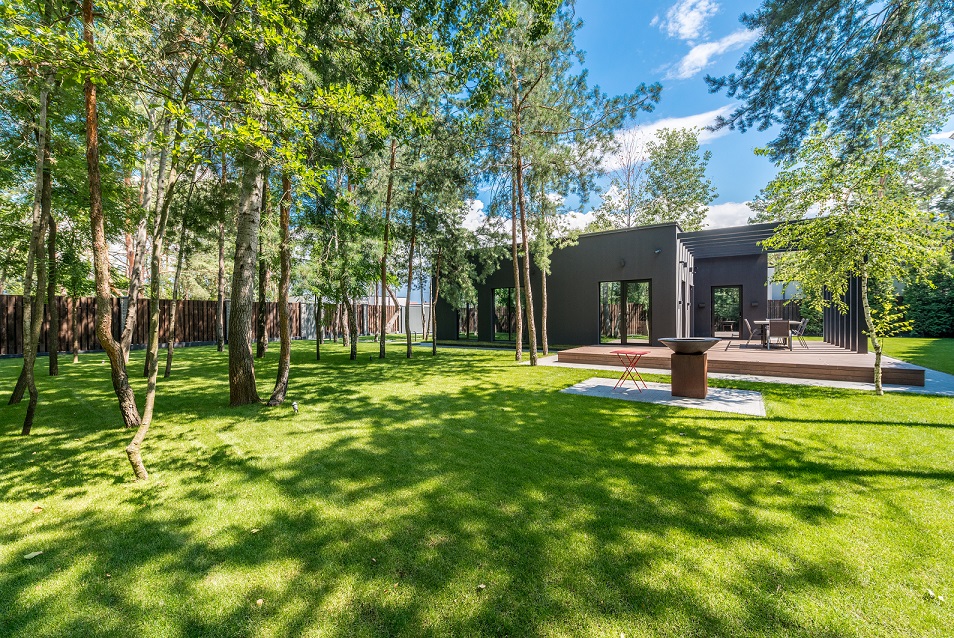One of the key factors in maintaining a healthy and vibrant lawn is managing the balance between shade and sunlight. The amount of shade or sunlight that your lawn receives can significantly impact its growth and overall health. Different grass species have varying tolerance levels for shade, and understanding how to manage these conditions can help you optimize the growth and appearance of your lawn. In this article, we will explore various strategies for managing shade and sunlight in your lawn to promote optimal growth.
Understanding Shade and Sunlight:
Shade refers to areas in your lawn that receive less direct sunlight due to the presence of trees, structures, or other obstructions. Sunlight, on the other hand, refers to direct exposure to the sun’s rays. Both shade and sunlight have specific implications for the health and growth of your lawn.
Grass species vary in their shade tolerance, with some thriving in full sun and others adapting well to partial shade or even full shade conditions. It is important to choose grass species that are suitable for the amount of shade or sunlight your lawn receives.
Assessing Shade Levels in Your Lawn:
Before implementing any strategies, it is important to assess the level of shade in your lawn. Spend some time observing the patterns of shade and sunlight throughout the day and across different seasons. This will help you determine the areas of your lawn that are heavily shaded, partially shaded, or receive full sunlight.
Grass species that are better suited for shade tolerance include St. Augustine grass, fine fescue, certain varieties of zoysia grass, and some shade-tolerant cultivars of Bermuda grass. If you have areas with significant shade, consider incorporating these grass species into those areas for better results.
Strategies for Managing Shade and Sunlight:
- Pruning Trees and Shrubs: If your lawn is shaded by trees or shrubs, pruning them strategically can help increase sunlight exposure. Remove lower branches or thin out dense foliage to allow more light to reach the lawn. Consult with a professional arborist if necessary to ensure proper pruning techniques are followed, preserving the health and aesthetics of the trees.
- Trimming Hedges and Structures: Trim hedges, fences, or other structures that cast shadows on your lawn. By maintaining these features at an appropriate height, you can maximize sunlight penetration and minimize the shaded areas.
- Selective Tree Planting: Consider planting shade trees strategically to provide shade in areas that receive excessive sunlight, while allowing enough sunlight for the grass to thrive. Positioning trees on the west or southwest side of the lawn can help provide shade during the hottest parts of the day.
- Using Shade Structures: In areas where shade is difficult to mitigate, consider using shade structures such as pergolas, umbrellas, or awnings. These can provide relief from intense sunlight and create shaded areas for outdoor activities. Be mindful of their placement to ensure they do not cast excessive shade on the lawn.
- Overseeding with Shade-Tolerant Grass: In heavily shaded areas where grass struggles to grow, consider overseeding with shade-tolerant grass species. This can help improve coverage and fill in bare spots. Fine fescue, shade-tolerant cultivars of Bermuda grass, and certain varieties of zoysia grass are suitable options for shade tolerance.
- Adjusting Irrigation: Shaded areas typically have reduced water evaporation rates compared to areas with direct sunlight. Adjust your irrigation schedule accordingly to avoid overwatering in shaded areas. Regularly monitor soil moisture levels and adjust watering times and frequencies as needed to prevent waterlogged conditions.
- Conserving Moisture in Sunlit Areas: Sunlit areas tend to dry out more quickly due to increased evaporation. To conserve moisture in these areas, apply organic mulch around trees, shrubs, and flower beds to retain soil moisture and reduce water loss.
- Aerate and Amend the Soil: In shaded areas, soil compaction and poor drainage can be common issues. Regularly aerate the soil to improve air circulation, water penetration, and nutrient uptake. Additionally, consider incorporating organic matter, such as compost or peat moss, into the soil to enhance its structure and drainage capabilities.
- Adjusting Mowing Heights: Grass in shaded areas typically grows taller and thinner due to reduced sunlight. Adjust your mowing heights accordingly, allowing the grass in shaded areas to grow slightly taller than the grass in sunlit areas. This will help maximize photosynthesis and promote healthier growth.
- Pruning Overhanging Branches: Trim overhanging branches from neighboring properties that cast excessive shade on your lawn. This will allow more sunlight to reach your grass and reduce the competition for resources.
- Regular Maintenance Practices: Maintain a consistent lawn care routine throughout the year. This includes proper watering, fertilizing, and weed control practices. Adequate nutrition and regular maintenance help ensure that your grass is better equipped to cope with shade or sunlight stress.
Managing shade and sunlight in your lawn is crucial for optimal growth and health. By understanding the specific shade levels in your lawn and implementing the appropriate strategies, you can create a balanced environment that promotes the growth of healthy grass. Assess shade levels, consider shade-tolerant grass species, adjust irrigation and mowing practices, and address overhanging branches or structures that block sunlight. With proper management, your lawn can thrive and maintain its beauty, even in challenging shade or sunlight conditions.
